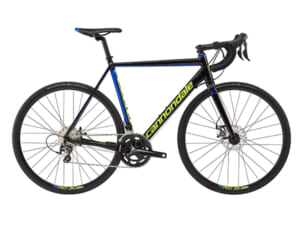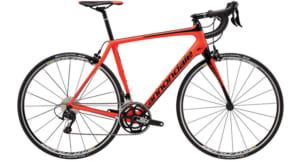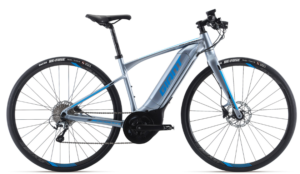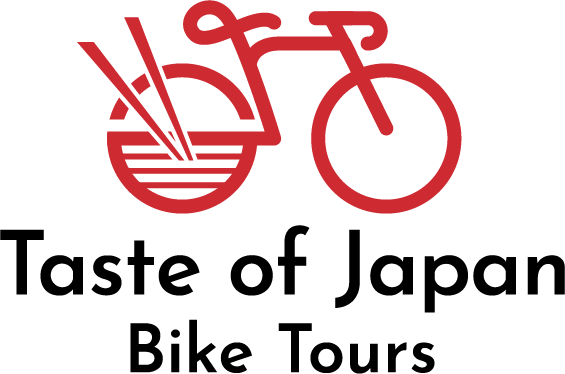
Taste of Japan Bike Tours
resources
In this section, we’ve laid out the essentials and the good-to-know information before you book with Taste of Japan Bike Tours. Guests already confirmed to join us for a group guided cycling tour will also find the information here useful as we address the questions we receive most often in the days leading up to their trip.
bike rental options and details
Please let us know your height and the make and frame size of the bicycle you usually ride at the same time of application. Arrangements cannot be made for frame sizes larger than 58 cm.
All bicycles are equipped with flat pedals. If you prefer to use your own pedals, bring pedals and cycling shoes with which you are familiar.
Helmets are mandatory. For your comfort, we recommend that you bring your own preferred helmet. If you do not bring a helmet, please contact us for rental helmets.
Saddles vary from person to person. If you bring your own saddle, our bicycle mechanic will assist you with saddle fitting. You may bring your own bicycle. However, bicycles in travel cases (soft type such as Cyclone, hybrid type such as EVOC, and hard type such as Bike Box Alan) are not accepted when traveling inside Japan, especially on public transportation. Large luggage may require advance reservations, which are difficult to secure. If you bring your own bicycle, you will be responsible for its safety and maintenance, including spare parts you may need during the trip. You will be responsible for arranging for any assembly, disassembly, or shipping required before or after your Taste of Japan Bike Tours experience. There is no discount for bringing your own bicycle.
If you are renting, please choose the bike that best fits your needs.
- road bikes
- e-assist bikes
- notes

 Cannondale Optimo (above) or Synapse (below) or similar
(Included in the tour price)
Cannondale Optimo (above) or Synapse (below) or similar
(Included in the tour price)Reliable performance road bikes for cyclists of all levels. Designed to ride smoothly over any distance, Cannondale bikes offer comfort and control with stable handling. Color may vary.
 Giant E-assist Bike Escape RX-E
(add $300)
Giant E-assist Bike Escape RX-E
(add $300)Lightweight aluminum frame with easy-to-handle geometry for beginners and a powerful, smooth motor unit codeveloped with YAMAHA. Large-capacity battery integrated with the down tube design delivers up to 225 km of assistance. Equipped with a standard kickstand.
・All bikes are outfitted with flat pedals. Please bring your own pedals and cycling shoes if you would prefer to clip in - our bike mechanic will swap out the pedals.
・Helmets are required for all rides and riders. For comfort, we recommend guests bring their own helmets. Please let us know if you do not plan to bring a helmet - we will have one ready for you.
・Saddles can be highly individual. If you would like to bring your own saddle, you may and our bike mechanic will help fit it on your bike.
・You may bring your own bike. However, bikes in travel cases (both soft like a Scicon, hybrid like an EVOC, or hard like a Bike Box Alan) can be immensely challenging to travel with around Japan, particularly on public transportation where large items may not be accepted or require advance reservation. Additionally, you are responsible for the safety and maintenance of their own bike, including any spare parts that may be required during the trip. Any assembling and disassembling, as well as shipping arrangements required before and after your Taste of Japan Bike Tours experience, is the guest's responsibility. There is no discount for bringing your own bike.
the package
- Included on all tours
- Not included
•Train, bus, and ferry transportation included in the itinerary
•Local knowledge and support by two experienced bilingual cycling guides and mechanics (English and Japanese)
•Cultural navigation, Japanese language tips, and contextual information for an authentic learning experience
•Route support on the day of cycling (by both guides and support vans)
•Meals as specified in the itinerary
•One well-maintained rental bike (road bike or e-assist bike for extra fee)
•Entrance and viewing fees for all activities and events included in the itinerary
•Online photo album of your trip
•Name sticker in Japanese
•Round-trip transportation to and from start and finish points
•Lodging expenses before and after the trip
•Personal effects, souvenirs, and drinks purchased during the trip
•Alcohol, soft drinks, and other beverages
•Optional activities during free time, entrance fees, laundry, and other personal expenses
•Meals during free time (guests can enjoy local cuisine of their choice)
•Wi-Fi rental and other personal-use technologies
packing lists
- For biking
- Cold-weather biking
- When hiking, sightseeing activities
- Other essentials
- Cycling jerseys & Bike shorts (at least 2)
- Socks
- Cycling gloves
- Water bottle
- Sunglasses
- Water-resistant rain jacket or windbreaker
- Helmet (we provide rental helmets, if you prefer yours)
- Pedals and cycling shoes (if prefer to clip in)
- Bike lights(if you prefer to use yours)
- Headband, hat, or Buff (personal preference)
- Chamois cream or Vaseline
- Sunscreen(personal preference)
(In November or March) You might need,,,
•Insulated long-sleeve shirt and other moisture-wicking clothing
•Sweater and/or jacket
•Head gear that covers ears
•Full gloves
•Booties or shoe covers
•Arm warmers and/or leg warmers
•Full-length tights
•Comfortable shoes (preferably running shoes or sneakers)
•Comfortable clothes
•Rain gear
•Sweater and/or jacket
•Camera and/or cellphone
•Charging devices
•Power adapters and/or converters (Japan generally uses a flat two-pin)
•Rental Wi-Fi or SIM card
•Toiletries and personal items
•Credit/debit cards
•Personal identification
•Travel booking information
•Cash (JPY) for incidentals (see “Incidentals and Daily Expenses” for details)
•Passport (physical copy and photo on your cellphone)
•Travel health and medical insurance (physical copy and photo on your cellphone)
travel insurance
For additional peace of mind, Taste of Japan Bike Tours strongly recommends that guests consider purchasing travel insurance. Following are tips and suggestions for travel insurance.
Why is travel insurance so important?
In today’s changing travel environment, it’s important to protect your travel investment so you can relax and enjoy your trip. Unforeseen events such as flight delays, baggage loss, or even a sudden sickness or injury can impact your travel plans.
For your convenience, we offer a Travelex Insurance Services protection plan to help protect you and your travel investment against the unexpected. For more information on the available plans, see the Why Buy flyer linked below or contact Travelex Insurance at (800) 228-9792 and reference location 11-0099. You can also get a free Travelex estimate at https://www.travelexinsurance.com.
weather
The rainy season begins in early June and concludes in mid-July. Please check the weather before you depart. All Taste of Japan Bike Tours ride as scheduled, rain or shine. Exceptions may be made in certain circumstances—for example, heavy rains, strong winds, and other severe weather. In order to remain on schedule, our bike tour guides will guide you to your destination(s) using public transport for no additional cost.
incidentals and daily expenses
In Japan, cash is king. This is especially true in the more rural parts of Japan, where card or cashless payments are not universally accepted. Most credit and debit cards are accepted in Japan. We recommend that you bring some Japanese yen (¥20,000 to ¥30,000 is usually sufficient) before your arrival. You can exchange your currency at your airport. ATMs are ubiquitous but foreign-issued cards are not always accepted. ATM withdrawals are only in Japanese yen. Most visitors opt to withdraw money from an ATM to replenish their cash as necessary throughout a trip, as opposed to preparing or exchanging a large sum of currency on arrival. Finally, to avoid any potential mishaps, we recommend carrying at least ¥10,000 in cash at all times and tucking away another ¥10,000 just in case.
